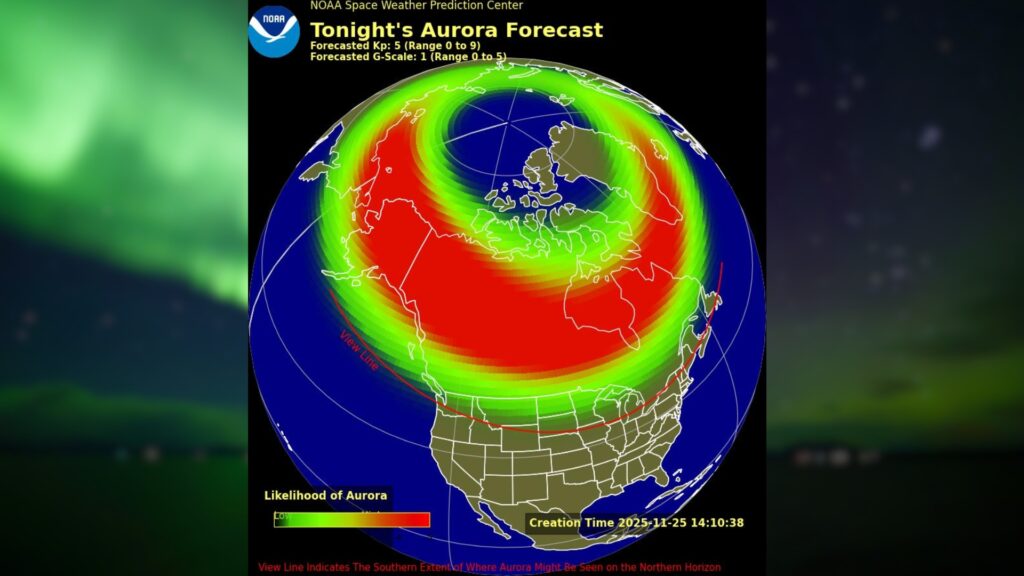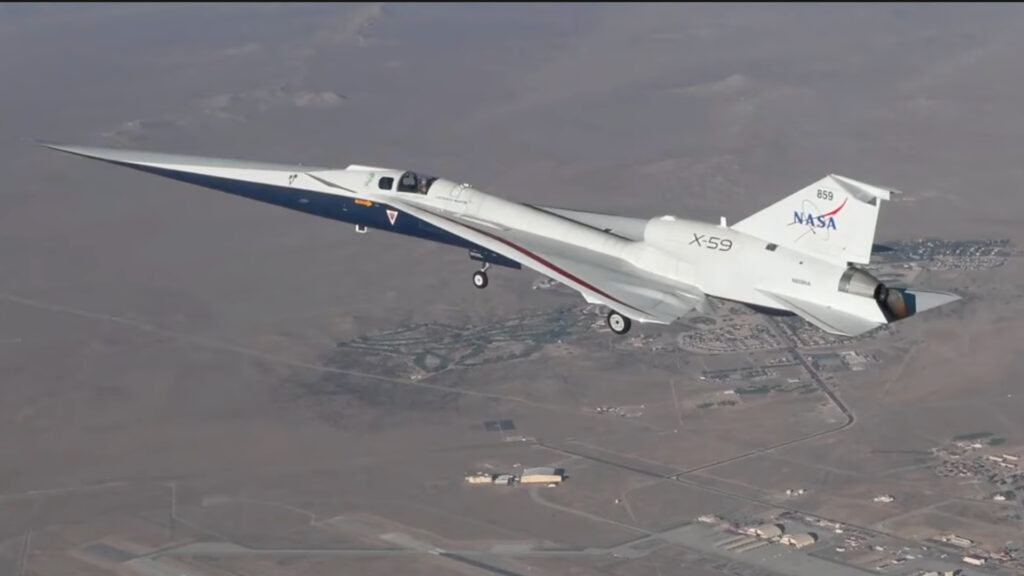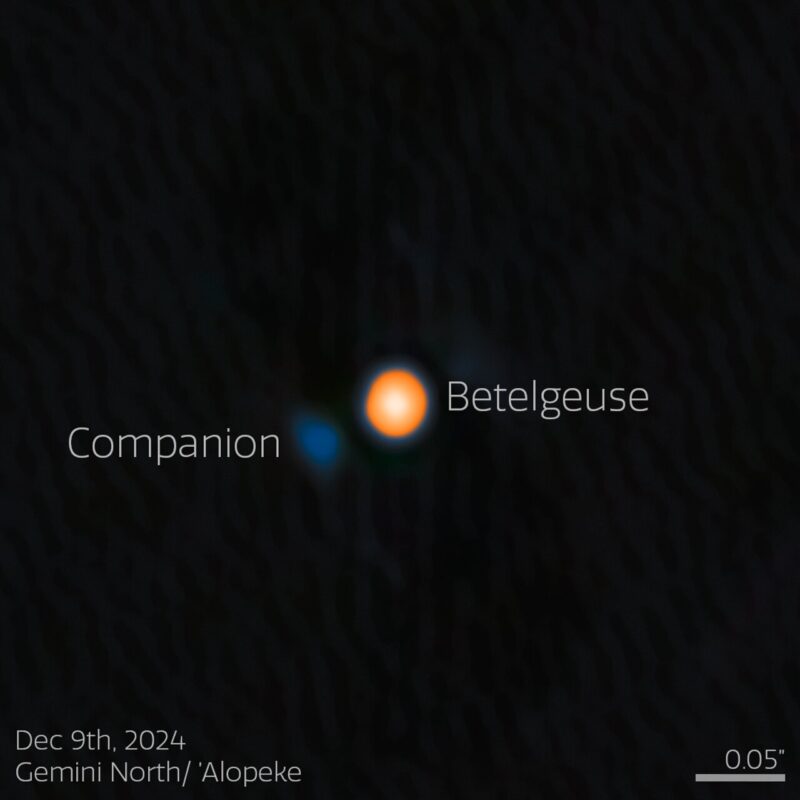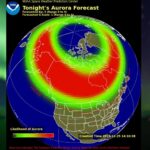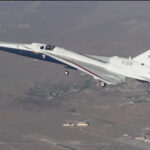Now Reading: Saturn’s moon Mimas may have an ocean — and a future spacecraft could find it
-
01
Saturn’s moon Mimas may have an ocean — and a future spacecraft could find it
Saturn’s moon Mimas may have an ocean — and a future spacecraft could find it
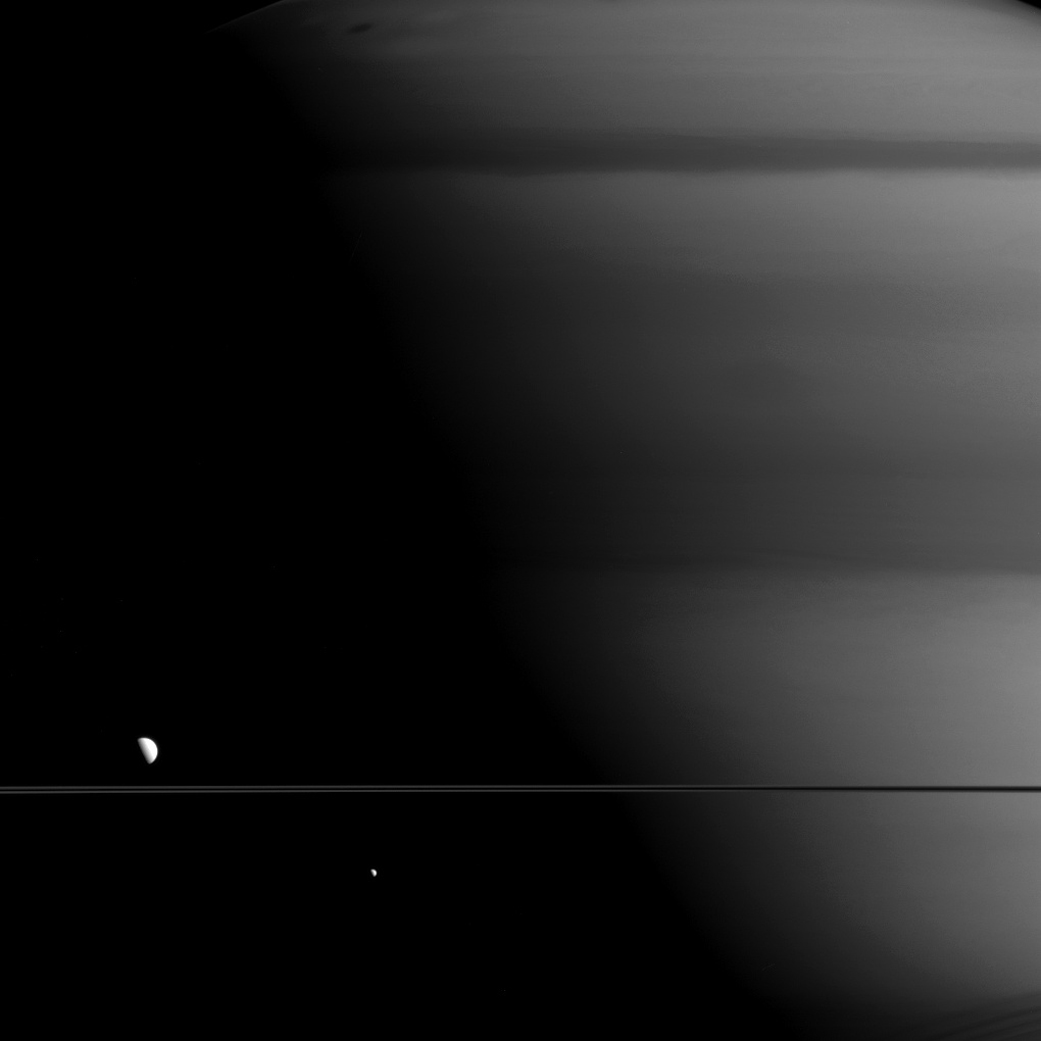
The case for a newborn ocean on Saturn’s moon Mimas continues to build.
Research mapping the thickness of the world’s icy crust not only provides a window for how old an existing ocean might be but also probes where the crust might be at its thinnest — the perfect spot for future missions to detect the ocean. At the same time, examination of Mimas’ largest crater is providing further constraints on the age range of the potential ocean.
“When we look at Mimas, we don’t see any of the things that we’re accustomed to seeing in an ocean world,” Alyssa Rhoden, a planetary scientist at the Southwest Research Institute (SwRI) in Boulder, Colorado, said last month at the joint Europlanet Science Congress-Division for Planetary Sciences meeting.
Fellow Saturnian moon Enceladus and Jupiter’s moon Europa — both thought to host oceans — are covered with a network of cracks and crevasses in their surface, signs that their volumes changed as ice melted into water. But the outer layer of Mimas, Saturn’s smallest major moon, has few obvious breaks. Its craters also seem immutable, as though carved into rock instead of ice.
Last year, however, researchers announced that measurements from NASA’s Cassini spacecraft supported a relatively newborn ocean on Mimas, an idea that scientists had started considering over the past decade as Cassini data continued streaming towards Earth. Early Cassini data had hinted towards a young ocean on the world as well, though scientists were initially skeptical. However, detailed observations are now making a strong case for an ocean on Mimas buried under 12 to 19 miles (20 to 30 kilometers) of solid ice.
Rhoden and her colleagues applied models based on Europa’s heat shell thickness to Mimas in an effort to determine the thickness of the latter’s ice shell and how heat flows across its surface. They found that, once melting began on the world, it proceeded quickly.
The melting of Mimas is intrinsically tied to its orbit. Although scientists are still trying to sort through how moons in the Saturn system formed, it is likely that any ocean the satellite was birthed with had long since frozen out. Scientists believe that today’s possible ocean on Mimas isn’t a remnant of its formation, however, but rather a recent arrival — one most likely birthed by changes in the moon’s travels.
As a moon orbits a planet, the two objects gravitationally pull at one another. On Earth, the result is the changing ocean tides as our moon tugs at the water. Less obvious is how the Earth itself tugs at the solid rocky surface of the moon.
In the Saturnian system, it appears that something kicked Mimas into a less circular, more eccentric orbit at some point, changing how Saturn’s gravity pulls on the solid ice. What scientists have found is that the push-and-pull of Saturn from the moon’s new position creates heat that melts ice into water. This could very well form a newborn ocean. At the same time, gravity is slowly circularizing the orbit of the moon.
When the moon’s path once again traces a circle, the tidal pull will no longer be capable of melting ice, and the nascent ocean scientists believe exists will slowly refreeze.
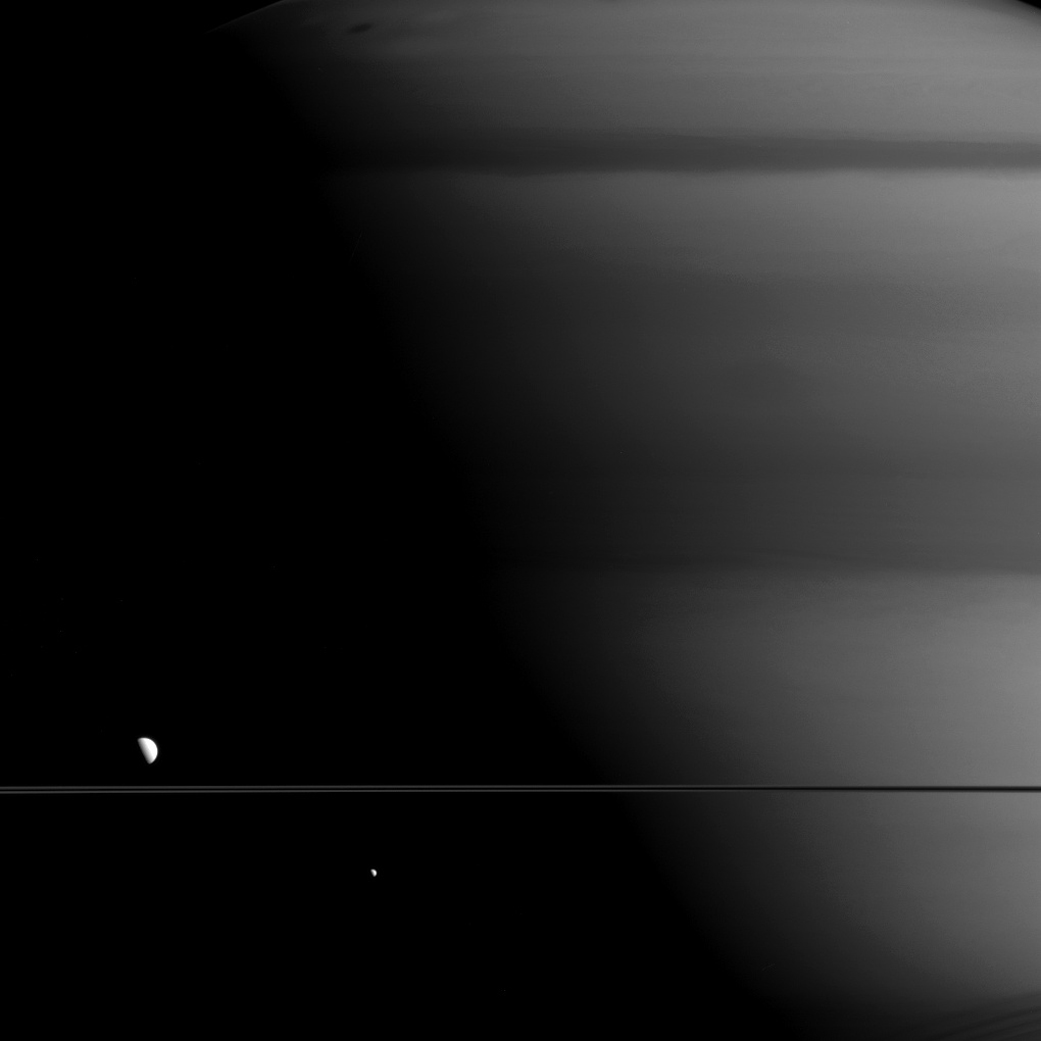
Rhoden and her colleagues studied how the eccentricity could have changed to recreate what is seen at Mimas today. They found that a strong shift in orbit would have completely melted the moon’s surface, wiping out craters and other surface features completely. They found that Mimas’ orbital change likely happened within the last 10 to 15 million years — an eyeblink on astronomical timescales, and one that fits previous estimates of the age of the young ocean.
The team also simulated how heat might move through the moon in an effort to determine how future missions could potentially detect a subsurface ocean. Their simulations suggest that heat flow in the ice — and the resulting melting and thinning of the shell — might not be straightforward. However, a future orbiter could potentially use measurements of the heat to detect the ocean beneath.
“It would be hard, but may be doable,” Rhoden said.
The heart of the Death Star
Mimas is often called the “Death Star moon,” in reference to its similarity to the iconic Star Wars space base. A giant crater stretches over a third the diameter of the moon, creating the apparent focal point of the evil machine. Herschel crater stretches 80 miles (130 kilometers) across, and is playing a key role in the discussion about the existence of Mimas’ ocean.
The shape of a crater can provide a lot of information about the ground it is carved from. Not only did the impact excavate material onto the surface for later study, but its very rigidity can also allow researchers to determine how stiff ice in the region was at formation.
Simulations of crater formation on Mimas reveal the ice could not have been completely stiff when Herschel was carved. By modeling Mimas at various points in history, ranging from completely ocean-free to a watery world covered in ice, researchers found that Herschel likely formed when Mimas was on the cusp of melting.
Mimas “needs to be right on the tipping point,” planetary scientist Adeene Denton, also at SwRI, told Space.com. “It can stay on that tipping point for millions of years, but it needs to be close.”
Denton also presented her results at EPSC. The study, on which Rhoden was also an author, was recently published in the journal Earth and Planetary Science Letters.
At the center of Mimas lies a central peak, created when something large slammed into the smallest of Saturn’s major moons. Central peaks are a common feature of large craters, their formation a condition of the relative sizes of the impactor and its target. In previous work, Denton had established that a collision into solid ice would have created a peak-free crater.
However, impactors are also excavators, carving into the crust of the parent body. If Mimas had boasted an ocean beneath its surface, the collision would have sent water flying everywhere. The liquid would have been too relaxed to create the peak.
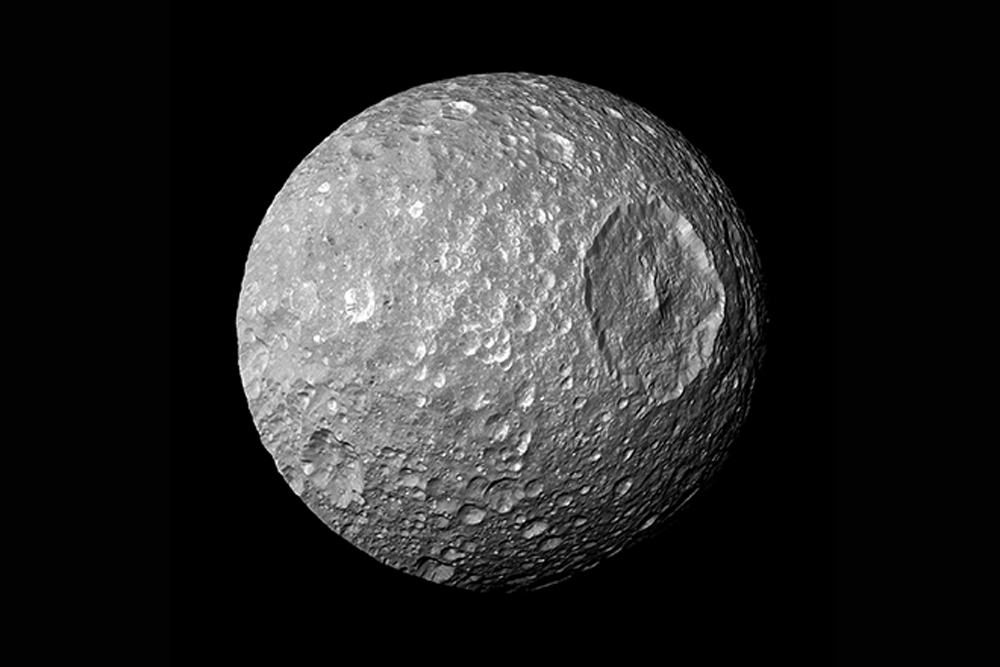
“Water can’t make a structure like that,” Denton said.
Herschel likely formed just as the ocean started melting, during a period when the ice was warmer but not quite liquid.
Denton’s study increases the possible window of Herschel’s formation from one million years to ten million. “That’s still geologically short, but way better than one,” Denton said at EPSC. “It’s an order of magnitude game.”
The study, combined with Rhoden’s work on the moon’s thermal interior and other work being done on the surface and interior, is helping researchers to better understand the misunderstood moon.
“All of these things are now building a coherent narrative about Mimas as a young ocean world,” Denton said.
Stay Informed With the Latest & Most Important News
Previous Post
Next Post
-
 012024 in Review: Highlights from NASA in Silicon Valley
012024 in Review: Highlights from NASA in Silicon Valley -
 02Panasonic Leica Summilux DG 15mm f/1.7 ASPH review
02Panasonic Leica Summilux DG 15mm f/1.7 ASPH review -
 03How New NASA, India Earth Satellite NISAR Will See Earth
03How New NASA, India Earth Satellite NISAR Will See Earth -
 04And Thus Begins A New Year For Life On Earth
04And Thus Begins A New Year For Life On Earth -
 05Astronomy Activation Ambassadors: A New Era
05Astronomy Activation Ambassadors: A New Era -
06SpaceX launch surge helps set new global launch record in 2024
-
 07Space Force plans new ‘Futures Command’ amid pressure to speed up modernization
07Space Force plans new ‘Futures Command’ amid pressure to speed up modernization












